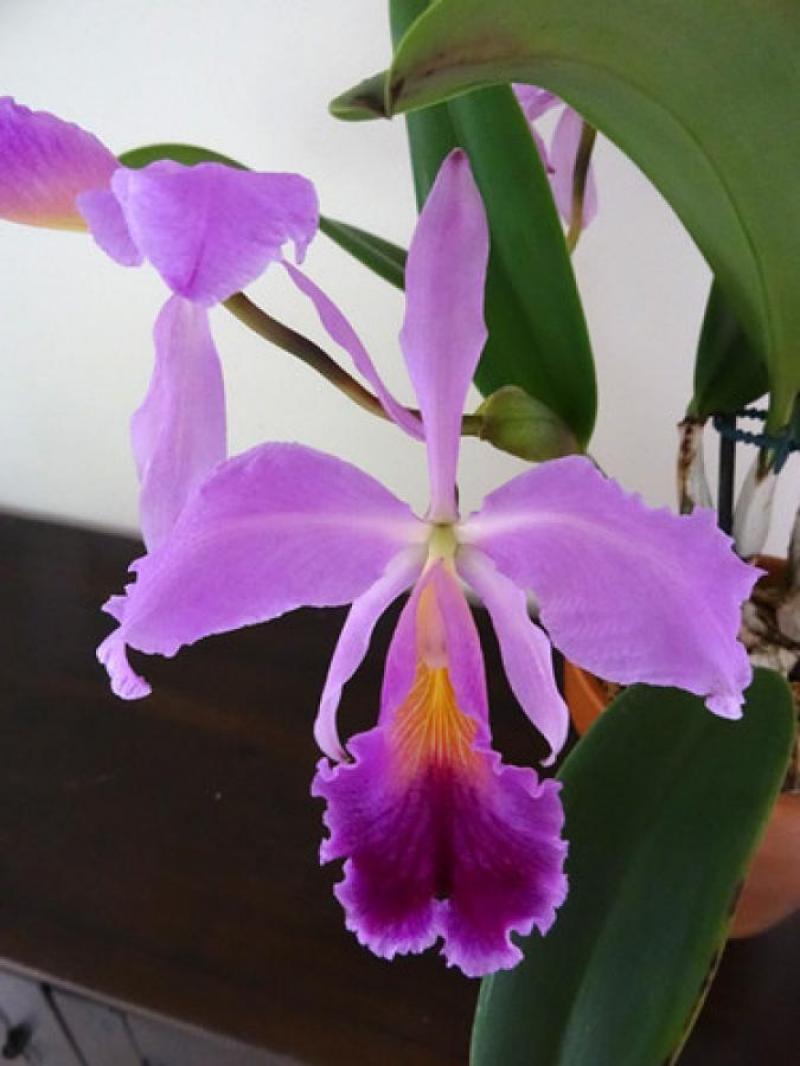Cattleya mendelii
Also known as: Mendel's Cattleya or Cattleya mendelii h.f. pincelata Cattleya mendelli h.f. pincelata Cattleya mendelii h.f. concolor Cattleya mendelii h.f. coerulea Cattleya mendelii h.v. jamesiana Cattleya mendelii h.f. rosea Cattleya mendelii h.f. quasialba Cattleya mendelii h.f. coerulescens Cattleya mendelii h.v. kegeljani Cattleya mendelii h.v. keglevani Cattleya mendelii h.f. albescens Cattleya labiata var. mendelii Cattleya mendelii h.f. semialba Cattleya cupidon Cattleya mendelii h.v. measureana Cattleya mendelii h.v. measuresiana Cattleya labiata var. bella Cattleya mendelii var. grandiflora Cattleya bluntii Cattleya mendelii var. morganiae Cattleya mendelii f. morganiae Cattleya morganiae Cattleya mendelii var. bella Cattleya hackbridgensis in the subfamily: Epidendroideae
Native to: Departamento de Santander - Colombia Departamento del Huila - Colombia
General Information
Mendel's Cattleya is a medium sized sympodial cool to warm growing epiphytic or lithophytic orchid belonging to the sub family Epidendroideae native to Colombia.
Plant Description
Sympodial. Grows to 25-40cm. Each new growth has a single leathery leaf that grows to 5-23cm long. Pseudobulbs grow to 2-18cm
Flowers
Numerous blossoms appear during Spring
Blooming Season
- Spring
Substrate(s)
- Coarse
- Medium
- Bark
- Charcoal
- Perlite
Care Notes
These orchids like to be kept on the dry side, but may need to be watered daily during warm weather, and prefer a well draining mix or also do well mounted, provided they can be watered regularly.
These are quite a forgiving orchid, there are no special requirements to get this orchid to flower, just good care and consistent conditions. Larger plants may be more fussy and can react poorly to change; a poorly timed repotting, a pest infection or an unusually hot day can set them back for a couple of years. However, even plants that have been treated poorly can thrive, and if they are set back they often recover much stronger then they would otherwise be.
Climate
Grows at high elevations. Rainfall ranges from 21mm to 95mm per day, heaviest in November and lightest in January. Temperature ranges from 18C to 26C, highest in August (19C to 26C) and lowest in September (18C to 24C).
Watering
These orchids are sensitive to excessive watering and should only be watered when they look thirsty. Water infrequently and ensure that the roots are dry before watering. Keep an eye on them especially during hot weather as overwatering can lead to rot, whereas underwatering may result in wilting or shriveling, which while unattractive, will not kill the plant.
Keep moisture levels up during hot weather as the plant is prone to dehydrationFertiliser
Apply liquid based fertiliser per recommended directions. They can benefit from a high phosphate fertiliser leading up to flowering season, followed by a high nitrogen fertiliser when new growth appears, and a balanced fertiliser in other times. These orchids can also tolerate slow release fertiliser applied 1-2 pellets per cup (250ml) of media.
Apply fertiliser regularly at half strength year round. Use a high Nitrogen fertiliser during Spring and Summer. Use a high Phosphorous fertiliser during Summer. Reduce fertiliser when plant is dormant during Spring.Potting
These plants are quite forgiving and will do well repotted ever 2-3 years. The mix should be coarse, well draining, and allow space for air to move and for roots to grow.
Alternatively, these plants will also do well mounted to tree fern or cork slabs, or mounted to trees.
Best time for repotting or mounting the orchids is the end of winter when new growths start to appear. Avoid repotting during hot weather,
This plant does very well in baskets or suspended pots This plant does well mounted to Cork slabs.





